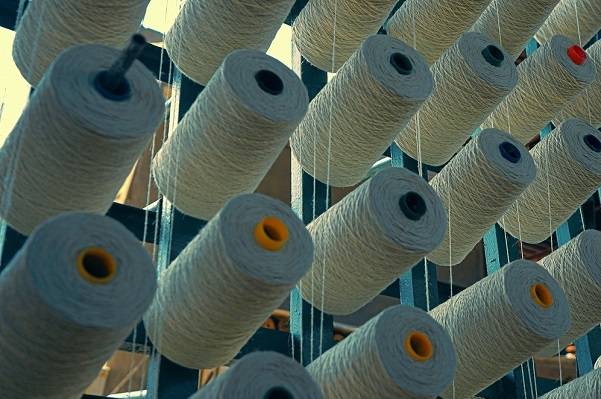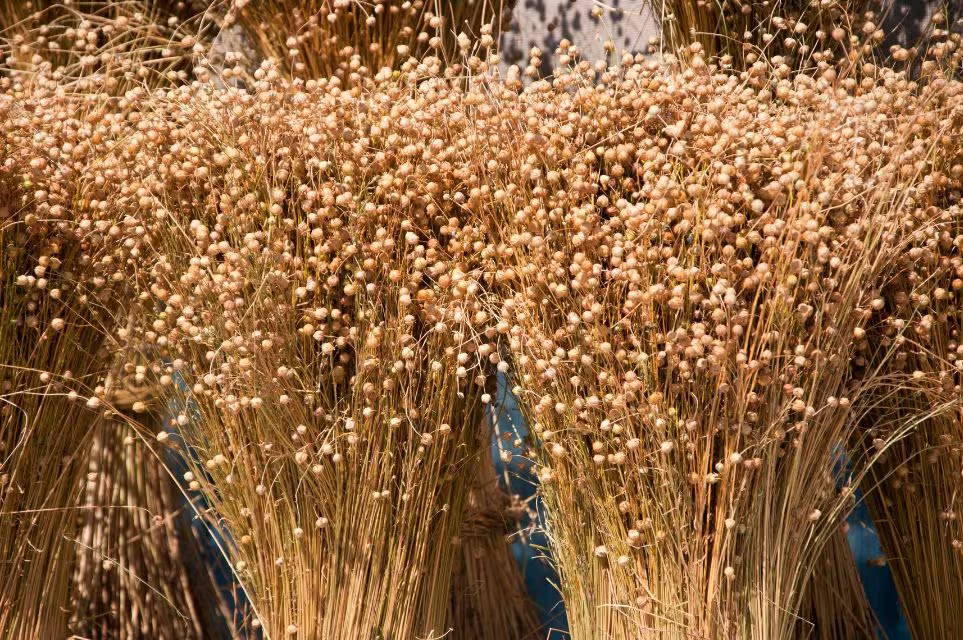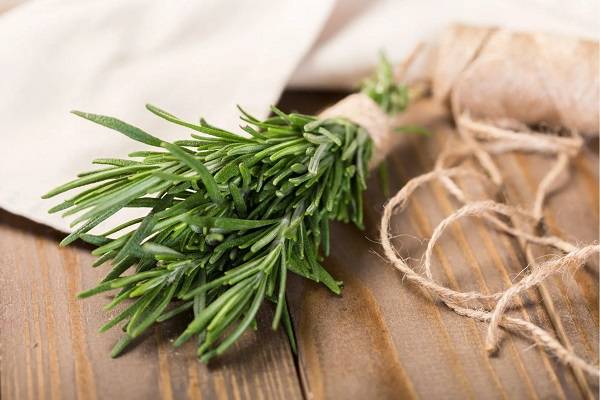LINE CORDAGE APPLICATIONS
Discover 15 Remarkable Ways to Use Flax Twine & Cord
We Present Surprising Uses of Linen Cordage, from Creative to Practical,from Traditional to Trendsetting

Innovation & Quality
Developing and supplying premium-quality, sustainably grown, consumer products
100% Natural
Organically Grown and Ethically Sourced
hemp and other natural fiber products
Shipping
We offer fast shipping
Your order out within 1-3 days
Wholesale
Visit our wholesale portal to register or login to your account
Flax fiber, made of flax plant (Linum usitatissimum), has been around for thousands of years. With its ancient roots and a multitude of different applications throughout history, it has permanently woven itself into our everyday lives. Renowned for its terrific strength, sustainability, and other exceptional properties, today, flax twine and cord are used for different types of purposes, such as food preparation, furniture restoration, gardening, maritime model making, arts & crafts (knitting, knotting, scrapbooking), survival gear, fashion accessories, and so much more.
You can use it to complete almost anything, from mundane tasks to intricate creative activities. In this article, we will explore the background of linen twine and cordage, their practical usage, how to choose the best type for your needs, and how to care and maintain them to last you a long time.
Shop For Premium-Quality Linen Supplies At Hemptique
Hemptique is proud to carry the finest selection of flax twine and flax cord which can be used for many different projects and crafts. With attention to detail every step along the way, our products stand the test of time and are perfect for food industry applications, creating handmade pieces, furniture repair, crafting pet toys, fashion accessorizing, and so forth. Made of premium 100% Egyptian linen, our cordage features outstanding properties like strength, moisture wicking, and food-safety, making it suitable for use in all aspects of our lives. Looking to the future, our company will continue to develop new eco-friendly supplies made of flax that resonate with the next generation of eco-conscious consumers and handcrafters. For inquiries, you can reach us by phone at (760) 602-4864 ext. 402 & 405 or register for a wholesale account to take advantage of wholesale prices. Discover the difference Hemptique makes and uncover infinite possibilities of flax fiber.
Flax Exploitation Through History
Flax plant has had a crucial role in early human development. The first traces of flax plant domestication date back to about 10,000 years ago in ancient Mesopotamia, when the plant was utilized for food, medicine, and finally for its fiber to make sails, ropes, baskets, clothes, home textiles, and other similar items. In the beginning it was used only by the upper classes and the priests.
Common Uses Of Flax Twine & Cord At Home
Flax cord can be used as an eco-friendly alternative for a number of different purposes at your home. From trussing a turkey and tying off cake boxes to wrapping gifts and making toys for your beloved pets, flax twine has countless household applications:
Culinary: Meat preparation (butcher’s twine)
Flax twine can be used as butcher’s twine (also known as cooking or kitchen twine). Flax twine is oven-safe, food-safe, durable, and made from 100% natural material that is strong enough to tie into tight knots. It is suitable for cooking because it can withstand high temperatures. When cooking, it is essential to use only natural fibers, as they don’t melt when exposed to high temperatures. Most importantly, it does not impact food flavor, color, or aroma as it cooks, but preserves pure taste of your food creations. Chefs use it to tie a roast or to truss turkey into a tidy bundle that helps the meat cook evenly and also improve food presentation.
Kitchen essentials (baker’s twine)
Make full use of flax twine in the kitchen by using it as a baker’s twine. It is a smart and quick way to bring rustic and natural feel to packaging of your homemade goods, while introducing sustainable practices into your kitchen.
Uses: Flax twine can be used to add decoration, secure bags, tie cake boxes, fasten fabric on canned jars, tie off cookies, present food, hang cooking utensils, create dining table centerpieces, or tie bundles of herbs.
Uses: Flax twine can be used to add decoration, secure bags, tie cake boxes, fasten fabric on canned jars, tie off cookies, present food, hang cooking utensils, create dining table centerpieces, or tie bundles of herbs.

Gardening
For those of you with green thumbs, flax twine is an indispensable tool since it is highly durable and strong while being biodegradable. In gardening, flax cord can be used for a variety of purposes, from securing netting and tree wrapping to hanging gardening tools in a shed. Typical gardening applications encompass:
Tying & supporting plants
Use flax twine to tie plants that require staking, such as tomatoes, cucumbers, eggplants, beans, etc. It provides sturdy but gentle support that does not damage the stems. Furthermore, its sustainable properties make it ideal for organic gardening since it does not leave any harmful residues.
Loop the twine around the stem so that it is tight enough to support the plant but loose enough not to constrict the growth. Check the ties regularly throughout the growing season and adjust the knots if necessary. At the end of the season, flax twine can safely be composted together with plant debris, thus encouraging eco-friendly farming and following the principles of eco-conscious living.
Trellis making
Securing branches
Bundling vegetables & herbs
Use twine to hang freshly harvested vegetables like asparagus, onions, or garlic. Branches, leaves, flowers, or cut herbs can be bundled and hanged for drying. After drying, make sure you wrap them up in fabric to preserve moisture.
Make a simple DIY trellis support for roses or clematis by tying linen cord between the support poles and guiding the plant to grow in the desired direction. Vertical trellis, on the other hand, are perfect for strawberries, beans, or summer squash.
Marking garden sections & rows
With flax twine you can easily section off garden areas or mark straight rows for planting.
Prevent potential breakage and bending of trees or shrubs by tying loose branches to a sturdy structure.
Use twine to hang freshly harvested vegetables like asparagus, onions, or garlic. Branches, leaves, flowers, or cut herbs can be bundled and hanged for drying. After drying, make sure you wrap them up in fabric to preserve moisture.
Flax Twine In Arts & Crafts Projects
Below, you will learn more about different ways flax twine and cord can be utilized in arts and crafts. For more ideas on DIY projects, visit our page Ideas and inspiration and get crafting!
Home décor DIY
Add rustic charm to your home interior with DIY décor pieces made of linen. DIY artists choose linen for its organic appeal, strength, absorption and other advantages. Creative DIY possibilities with this multi-purpose material are endless: weave it into a lampshade, knot a beautiful macrame wall hanging, make hanging shelves, guardrails, doormats, curtain tiebacks, mirror frames, DIY bookmarks, or partition walls.
Model ship building
For maritime model makers, cordage made of flax is a perfect supply for delicate work that requires precision. It adds a touch of authenticity since it successfully mimics intricate rigging of antique vessels with extraordinary detail. It reflects not only the strength but also the aesthetics of the ship’s cables with remarkable historical accuracy.
Knitting & weaving
When used by fiber crafters, linen is quickly transformed from a multifaceted supply material into a unique handmade item for contemporary homes. Use it to knit or weave functional and long-lasting handicrafts of natural beauty. Make kitchen textiles (DIY coasters, placemats, bowls, or produce bags), wall décor, baskets, storage compartments, or boxes.

Furniture restoration
Furniture restorers often use flax twine when repairing antique chairs or refurbishing mattresses, due to its phenomenal resilience and ability to withstand tension without compromising the integrity of the restored piece. Restoring experts choose flax twine over other materials not only for its high quality and functionality, but also for its authentic look. Linen is used to re-tie the springs of damaged chairs in the same, traditional method the original seat foundation springs were tied.
Fiber (string) art
String art or fiber art, is a creative craft of arranging cord between specific points on the baseboard to create patterns or unique designs. Many types of thread can be used to make fiber art, however, if you have options, you should opt for environmentally beneficial craft supplies made of natural materials, like flax.
Gift wrapping & packaging
In a world increasingly concerned about environmental hazards, gift wrapping and packaging is also transforming to become greener. Eco-friendly wrapping supplies are substituting old-fashioned wrapping materials that are harmful for our planet. Next time you have presents to wrap, instead of glue or ribbon, why not use linen? Flax cord is a perfect sustainable alternative to glue that adds an eco-chic touch to packaging and brings awareness of environmentally-friendly principles. Use flax cordage to tie boxes wrapped in repurposed paper or fabric, decorate jars with cake mixes, attach tags or embellishments to presents, or make tote bags and sacks for Christmas.
Bookbinding
Flax string has been bookbinder’s absolute favorite thread for a long time. If you want to make a custom book yourself, or to repair an antique book, opt for linen thread as it is very strong and durable with beautiful natural sheen. It is a top-notch choice for hand sewing paper together and securing pages, prolonging the book’s life span. It also prevents tears and reduces the stress on paper with its moisture absorption abilities.
Industrial Applications Of Flax Twine
The versatility of flax fiber goes beyond gardening and home decorations. Flax twine is used in many industries, where its durability and composition provide unique benefits. From fisheries (fishing nets) and construction (house building) to automotive industry (eco-friendly car interiors) and electronic industry (linen lacing cord), linen has found its way to all industries.

Fashion accessories
Fashion designers and manufacturers have found a beloved ally in linen. Linen is used not only for its aesthetics but also for its eco-friendly properties. Flax is used to manufacture stylish, biodegradable accessories such as summer handbags, totes, hats, belts, clutches, hair pieces, and jewelry. These accessories resonate with buyers who appreciate environmental values, style and function.
FTextile & fabrics in apparel industry
Apart from accessories, flax cordage can be integrated into fabric design. This natural thread adds texture and dynamics to clothing. Moreover, it can be applied as an embellishment on clothes or to create unique knitwear patterns. Premium flax fiber is utilized to manufacture finest fabrics like damask, lace, and sheeting.
Environmentally friendly event décor
In recent years, more and more people are selecting biodegradable decorations for their special events. Its natural charm is perfect for parties, weddings, anniversaries, and similar events. Event planners can utilize flax twine and cord to tie bouquets, make boutonnieres, create rustic-looking dining table décor, photo backgrounds, or chair décor.
Kid-safe learning materials & toys
Manufacturers use flax twine to create kid-safe educational materials and toys. This way, they are promoting the development of fine motor skills with 100% natural supplies. Linen can be used for a broad spectrum of projects, such as weaving kits, rope ladders for outdoor play, sensory toys, or jump rope. Linen cordage provides fantastic solutions for creative expressions, practical use, and ecologically responsible actions.
Outdoor gear & survival equipment
When it comes to outdoor activities, linen distinguishes itself from other materials for its outstanding strength and longevity. You can use it as tying equipment, to make a shelter, or to start a fire. Whichever way you choose to use flax cord outdoor, you will surely be amazed at its multidimensional properties.
Go Greener With Flax Fiber
Opting for linen is a conscious progress towards carbon-neutral choices in all aspects of life, including art, cooking, gardening, playing, and more. Cultivating flax does not consume a lot of water, nor does it require heavy use of pesticides. Furthermore, it is completely biodegradable, leaving minimal waste. It decomposes naturally and enriches the soil, thus being considered one of the plants that are the kindest to our planet, on top of being useful.
How To Choose Perfect Flax Twine Or Cord For Your Needs
In order to make use of the full potential of flax twine, you should choose the right type for your specific project. Here’s an overview of how to do it:
- Identify project requirements - The nature of your activity determines which twine to choose. For instance, some structural projects are calling for certain twine thickness, while more detailed work requires finer cord. Thick twine is perfect for outdoor play, landscaping, or gardening, while finer flax cord should be used to make things like jewelry.
- Choose high-quality cordage - First-class linen is evenly spun and has no surface irregularities. This ensures maximum strength throughout the whole length. A good sign of high quality is even coloration.
- Select appropriate tensile strength – Since there are various products on the market with variations in tensile strength, too, think of whether the cord will be able to bear weight needed for the intended purpose. If unsure, select higher-strength twine to be sure.
Care & Maintenance
To prolong the life cycle of flax twine and cord, follow these maintenance tips:
- Storage – Store in cool and dry place to maintain the fiber at its best. Excessive heat might dry out the fibers and make them brittle, while too much moisture might lead to mildew. Try hanging them loosely or rolling them neatly on a spool to avoid tangling.
- Maintenance – Check your stored supplies regularly for signs of damage, particularly if it is used for outdoor projects. By spotting signs of wear and tear on time you will be able to replace damaged parts and continue to use it as originally intended.
- Fraying prevention – The ends of cord can fray after cutting, which makes to work with. To seal the fibers and prevent fraying, apply a small amount of clear nail polish or beeswax to the ends.






